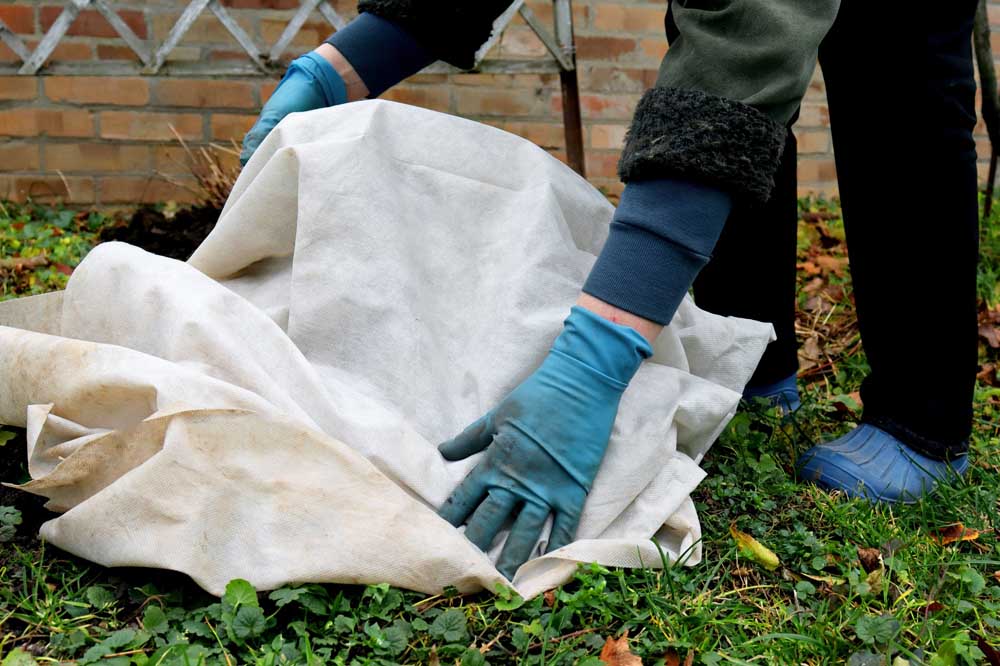Gardening corner: Don’t let a false spring get you down
Published 6:30 am Monday, May 8, 2023

- Woven fabric is better than using plastic which may draw in the cold when protecting a garden. Remove the cover in the morning and reapply in the evening if needed.
Hopefully you haven’t been disillusioned by a few days of temperature in the 80s. As the saying goes “It ain’t over yet.” It’s back to adjusting our mindset to continue with the planning, but not the planting unless you know the frost tolerance of the plant. In plain garden talk, no tomatoes, cukes, beans or squash yet.
Before the advent of the daily weather forecast or a click of the cell phone, people observed the clouds, the wind direction and every shift of the temperature. These signs never disappeared, most of us just never learned to read them. Yet, there is a certain degree of satisfaction in looking at the clouds as they move in and decide if it is time to pack up and head for the house before the rain hits.
Admittedly trying to predict a frost through cloud identification is pretty unlikely. Paying attention to a deep in the temperature late in the day should trigger the “pay attention” button. Being prepared early in the season with plans for frost protection will lessen the frustration of what to do when a frost is forecast. The following temperature guidelines will help determine what you may want to do.
A Light Freeze (29-32 degrees F) will kill some annuals and vegetables; can cause cosmetic injury on some hardier plants.
A Moderate Freeze (25-28 degrees F) kills hardier annuals and vegetables; many perennials and deciduous shrubs will develop wet, mushy or blackened leaves that eventually drop off.
A Hard Freeze (24 degrees F & below) kills annuals and vegetable crops are outright; perennials have extensive damage on exposed foliage; trees and shrubs often lose emerging leaves and flowers.
When you do learn of a frost headed your way, here are a few hints to help prevent it from ruining your spring garden or in saving your mid-summer garden.
Water the soil thoroughly if a frost is predicted. Damp soil heats up in warm daytime temperatures, so it retains heat and keeps the air above warmer by almost 5 degrees. Be sure and do it the morning before the freezing temperatures arrive so foliage will be dry; wet leaf surfaces can freeze faster.
Now is the time to bring in a supply of row cover, a woven fabric designed for insulation available at garden nurseries and at the OSU Extension office in Redmond. Use a couple of stakes to raise the cover slightly above the plants. In that way you will leave a zone of warm air around the plant.
Woven fabric is better than using plastic which may draw in the cold. Remove the covering in the morning and reapply in the evening if needed. You can also use cloches, buckets, milk jugs with the bottom cut out, just be sure to remove the covering in the morning so you don’t “cook” the foliage in the heat of the day.
Years ago, I used gallon milk jugs filled with water that I had dyed black using Rit dye.
They were set close to vulnerable plants to absorb heat during the day. That was before the row covers hit the market.
Wait to spread new mulch around early spring bloomers, such as forsythia and fruit trees, like apples and peaches, until after they flower. Bare soil radiates heat upwards to the plants and will help prevent tender buds from getting nipped.
Conversely, if you put down mulch in the fall, leave it on perennials as long as possible.
Mulch keeps the ground cooler, so these plants are less likely to break dormancy too soon. Once plants start to grow pull mulch away from the crowns, but keep it close so you can push it back over tender new growth for protection if a hard freeze is expected.
Maybe now is a good time to start a study of how to create micro climates in your back yard.
Think about it — we do have lots of rock.








